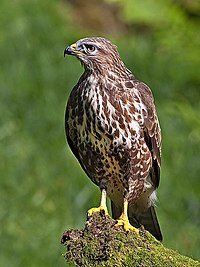
Photo from wikipedia
Abstract The Guadix-Baza Basin (GBB) in Andalucia, Spain, comprises palaeontological and archaeological sites dating from the Early Pliocene to the Middle Pleistocene, including some of the earliest sites with evidence… Click to show full abstract
Abstract The Guadix-Baza Basin (GBB) in Andalucia, Spain, comprises palaeontological and archaeological sites dating from the Early Pliocene to the Middle Pleistocene, including some of the earliest sites with evidence for the presence of early humans (Homo sp.) in Europe. Thus, the history of climate and environments in this basin contributes significantly to our understanding of the conditions under which early humans spread into Europe during the Early Pleistocene. Here we present estimates of precipitation and primary productivity in the GBB from the Pliocene to the Middle Pleistocene based on dental ecometrics in fossil communities of large herbivorous mammals, and perform an ecometrics-based distribution modelling to analyse the environmental conditions of Early and Middle Pleistocene human sites in Europe. Our results show that Early Pleistocene humans generally occupied on average relatively diverse habitats with ecotones, such as woodlands and savannas, but avoided very open and harsh (cool or dry) environments. During the Middle Pleistocene in Europe, humans occupied a comparatively much broader range of environments than during the Early Pleistocene, but were on average more concentrated in environments where the dental ecometric of mammals indicate wooded palaeoenvironments. In the earliest human occupation sites of the GBB, Barranco Leon and Fuente Nueva 3, the mean annual precipitation and net primary production estimates indicate climatic conditions close to modern Mediterranean sclerophyllous woodland environments, but with slightly higher primary productivity, indicating some similarity with East African woodlands. On the other hand, the environments did not resemble African grassland savannas. The browse-dominated diets of ungulates from Barranco Leon and Fuente Nueva 3 further suggest palaeoenvironments where grasses were a minor component of the vegetation. In the slightly older site of Venta Micena that has no evidence for the presence of hominins, dental ecometric estimates indicate climate and environments similar to Mediterranean “forest steppe” environments existing in the surroundings of Baza today. Grasses were prevalent in the diet of some taxa, especially equids, in Venta Micena, but most of the species show browse-dominated diets even there.
Journal Title: Quaternary Science Reviews
Year Published: 2021
Link to full text (if available)
Share on Social Media: Sign Up to like & get
recommendations!